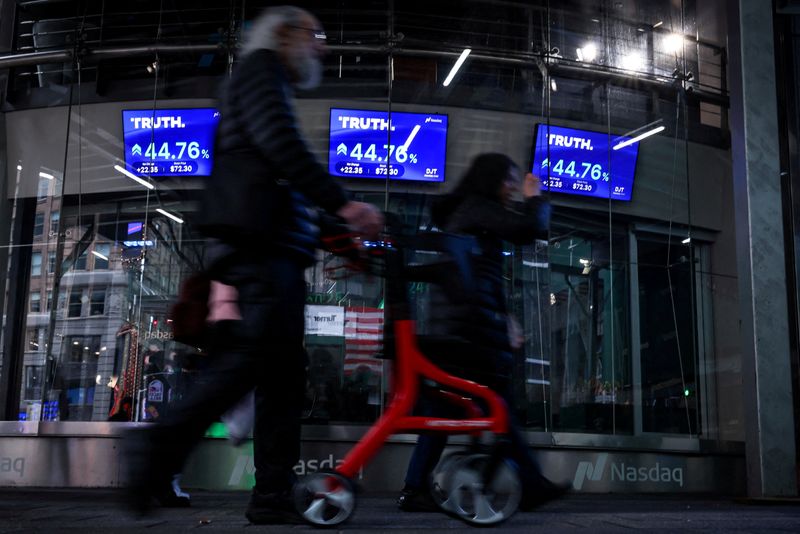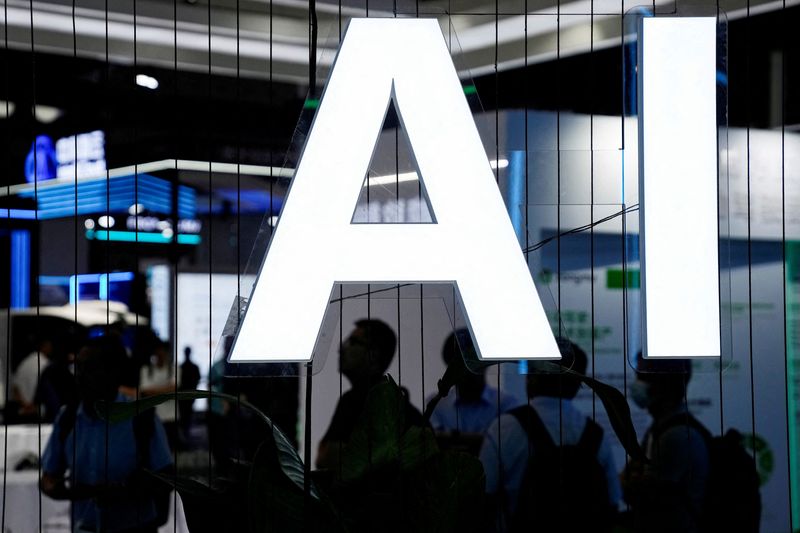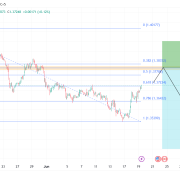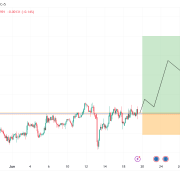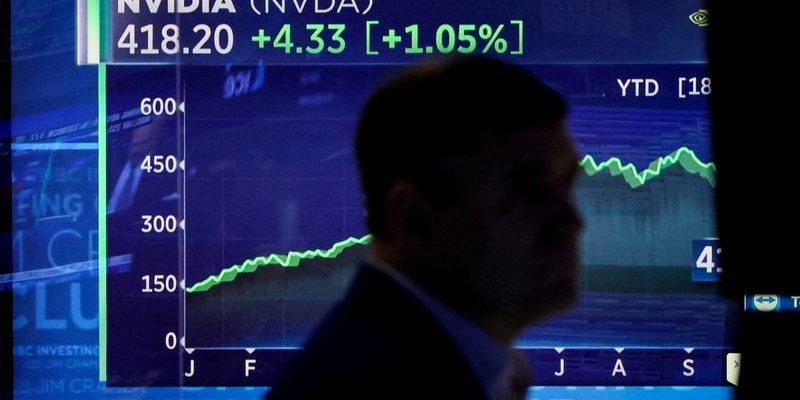
Investing.com — Here are the biggest analyst moves in the area of artificial intelligence (AI) for this week.
InvestingPro subscribers always get first dibs on market-moving AI analyst comments. Upgrade today!
BofA sees 40% more upside in Nvidia stock
Bank of America analysts reaffirmed their Buy rating on Nvidia (NASDAQ:NVDA) stock this week, raising the price target from $165 to $190, implying an upside potential of nearly 40% from current levels.
The analysts also increased their 2025 and 2026 pro forma earnings per share (EPS) estimates by 13% and 20%, respectively.
BofA believes Nvidia, which commands an 80-85% market share, is poised for a “generational opportunity” in a total addressable market (TAM) exceeding $400 billion, a sharp rise from current projections.
This bullish outlook is strengthened by recent industry developments, such as TSMC’s strong report, AMD’s AI event, and strong demand for Nvidia’s Blackwell chips, among other things.
In addition, the analysts emphasize Nvidia’s often underappreciated enterprise partnerships with firms like Accenture (NYSE:ACN), ServiceNow (NYSE:NOW), and Oracle (NYSE:ORCL), as well as its software offerings.
“NVDA’s engagements span multiple verticals, and offerings such as AI Foundry, AI Hubs, NIMs are key levers to its AI leadership, not only on the hardware side but also on systems/ecosystems side,” they noted.
BofA’s team also highlights Nvidia’s strong free cash flow (FCF), which they project to maintain a 45-50% margin—nearly double that of the “Magnificent Seven” tech giants—suggesting this financial strength remains underappreciated by the market.
Citi opens negative catalyst watch Qualcomm
Qualcomm (NASDAQ:QCOM) fell earlier this week after Citi analysts placed the company on a negative catalyst watch, citing weaker handset demand and other headwinds.
The firm raised concerns over declining demand in both the PC and wireless sectors, which together make up 38% of the total semiconductor market.
In its note, Citi pointed out that “there is also excess inventory in the handset end market (17% of semi demand), which could be a headwind for Qualcomm,” signaling potential difficulties for the company in the upcoming quarters.
It warned that these headwinds could lead to lower forecasts for Qualcomm’s December quarter. Moreover, the potential loss of Apple (NASDAQ:AAPL) as a customer starting in 2025 was highlighted as another risk to the company’s outlook.
“We are launching a negative catalyst watch on QCOM, given our expectations of lowered forecast in addition to Apple going away beginning in 2025,” Citi analysts noted, reflecting concerns about possible downward revisions to earnings estimates.
Citi’s own estimates for Qualcomm’s December quarter are 11% below the current consensus. The broader semiconductor sector is also facing challenges, with Citi projecting a lackluster third-quarter earnings season.
“We expect aggregate Consensus estimates to decline during 3Q24 earnings season,” they wrote, citing cooling demand in the PC and wireless markets as well as deteriorating conditions in the automotive sector.
While AI demand remains a strong point for the semiconductor industry, Citi is maintaining a more cautious outlook for the rest of 2024.
Race to $4 trillion market cap is on, Wedbush says
Wedbush analysts said the race among Big Tech companies to reach a $4 trillion market cap between Nvidia, Apple, and Microsoft (NASDAQ:MSFT) is underway.
In a note released Wednesday, the investment firm described this race as “front and center,” with these three giants vying for the milestone over the next 6-9 months.
“The AI Revolution starts with Nvidia and in our view the AI party is just getting started as it’s 9 pm/9:30 pm in a party going till 4 am with the rest of the tech world now joining with Apple also kicking off the consumer AI wave with iPhone 16.”
The investment firm said that Nvidia’s dominance in AI-driven data center spending remains crucial, noting that “it’s all about the pace of data center AI-driven spending as the only game in town for GPUs to run generative AI applications all go through Nvidia.”
Wedbush views Nvidia and Microsoft as the “first derivatives” of the AI wave, with other companies also beginning to enter the space.
Following visits to Asia and checks across the region, the firm expressed growing confidence in its AI demand thesis, predicting strong growth in AI infrastructure over the next 12 to 18 months. It projects that the AI infrastructure market could expand tenfold by 2027, driven by significant capital expenditures in the sector.
Wedbush analysts estimate that $1 trillion in AI-related capital expenditures will be deployed over the next three years, setting the stage for what they call the “next-generation AI foundation.”
“In a nutshell, we believe the stage is set for tech stocks to see another 20% move higher in 2025 with this tech bull market just hitting its next phase led by the AI Revolution,” they said.
HSBC lifts TSMC price target
Earlier in the week, HSBC analysts hiked the price target on Taiwan Semiconductor Manufacturing (NYSE:TSM) to NT$1,600.00 from NT$1,535.00, while maintaining a Buy rating.
Despite a reduction in capital expenditure (capex) in fiscal 2024 (FY24), HSBC reiterated its FY25 capex forecast of $39 billion.
The bank expects TSMC’s 2nm technology to begin contributing to revenue in the second half of FY25, citing an over 30% average selling price (ASP) premium for 2nm chips compared to 3nm, along with stronger customer engagement for 2nm.
It also expects utilization rates for 2nm “to be even higher than the initial utilization rate for 3nm,” which is projected to boost TSMC’s gross margins in FY25 and FY26.
TSMC’s 2nm chip revenue is projected to reach TWD568 billion in fiscal year 2026, the first full year of its contribution—about 40% higher than current consensus estimates. In comparison, the 3nm chips are expected to generate TWD160 billion in their first full year, 2023.
As a result of these projections, HSBC analysts have revised upward their gross margin estimates for TSMC for FY24 to FY26 to 55.8%, 59.2%, and 60.1%, respectively, compared to prior estimates of 54.7%, 57.1%, and 57.2%.
Cisco upgraded at Citi to Buy
Citi analysts upgraded Cisco Systems (NASDAQ:CSCO) to a “Buy” from “Neutral,” pointing to a growing potential boost from the company’s AI operations.
In a note to clients released Wednesday, they highlighted that while AI currently makes up only about 2% of Cisco’s revenue, the company is poised to benefit from the rising use of ethernet switches in AI-driven graphics processing units.
As a major supplier of ethernet switches, which are essential for connecting devices like computers, routers, and servers, Cisco is expected to play a key role in the expanding AI market.
Citi analysts revised their projections, estimating that ethernet will now capture a “high-40s percentage” share of the $10 billion AI switching market, up from their earlier forecast of “low 40s percentage.” They also expect this market to grow “more rapidly” in 2026, with ethernet taking more than half of the market share.
Cisco has forecasted an additional $1 billion in AI-related orders this fiscal year, and it anticipates its hyperscaler AI segment could reach $9 billion by 2027, driven in part by increased ethernet adoption. Analysts mentioned that this forecast may have grown as well.
“We see more AI benefiting Cisco’s topline as well as the valuation gap [versus] networking peers,” they wrote.
The analysts now value Cisco at 16 times its forward 2026 earnings per share, up from a previous multiple of 15 times, arguing that Cisco’s AI opportunities mean the stock “warrants less of a discount” compared to networking peers, which trade at around 25 times forward earnings.



